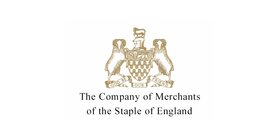Report Synopsis
Effective Monitoring Methods that Measure Ecological Outcomes in Grazing Systems
It might sound selfish, but I was once told that doing a Nuffield Scholarship is something that you do for yourself. For me, this couldn’t be truer, and it all stems from my choice of study topic. Growing up on a generational hill farm, with a deep-seated love for the land and farming, I have always been driven by a passion to enhance the environment for future generations. As I began my Nuffield studies, I soon realised that, without even knowing it, I had been studying this topic for over a decade.
I set out to examine how and what simple methods farmers can use to measure natural capital in sustainable livestock production systems. Farmers are uniquely positioned to observe and evaluate these critical elements daily - biodiversity, soil health, water and air - they all form the foundations of sustainable grazing systems. By combining their practical experience and awareness of environmental changes, farmers can use this knowledge to measure how day-to-day decisions directly affect the natural capital asset.
The basic methods that land managers can use are visual assessments of pasture health, soil structure tests, biodiversity observations and tracking water quality in streams and ponds. These low-cost, observation-driven approaches empower farmers to integrate monitoring into their routine practices without the need for expensive equipment or specialised expertise.
Case studies included in this report showcase examples of farmers faced with different climates, soil types, business structures and scale. Despite all these differences, these examples demonstrate how regular observations of ecological indicators can help farmers make informed decisions about grazing management, improve productivity and enhance environmental outcomes.
Whether a system is classed as mob grazing, regenerative, silvopasture, MSO (maximum sustainable output) or conservation grazing, the common environmental goals are all the same. This leads to very open conversations and a willingness to exchange knowledge. Listening to all the people involved, there is a very positive outlook on not just their own businesses but the future of the environment and livestock production. The industry faces many challenges - land use, market volatility, climate change, emissions, public disconnect, future policy and inheritance tax to name a few.
This journey has reaffirmed my belief that farmers and land managers who focus on grazing systems that allow ecosystem function are key to securing the health of the environment and the well-being of future generations.
Jimmy Stobart

AHDB

Company of Merchants of the Staple of England

